第62章
Lord Acton, in 1862, and other writers, have relied solely on this first set of testimonies. But the late Mr. Maziere Brady has apparently ignored or been unacquainted with these materials, and he cites a printed book not quoted by Lord Acton.* This work is the third volume of the 'Lettere' of Vincenzo Armanni of Gubbio, who wrote much about the conversion of England, and had himself been in that country. The work quoted was printed (privately?) by Giuseppe Piccini, at Macerata, in 1674, and, so far, I have been unable to see an example. The British Museum Library has no copy, and the 'Lettere' are unknown to Brunet. We have thus to take a secondhand version of Armanni's account. He says that his informant was one of two confessors, employed successively by Prince James Stuart, at Naples, in January-August 1669. Now, Kent sent to England an English translation of the Italian will of James Stuart. A will is also given, of course in Italian, by Vincenzo Armanni; a copy of this is in the Record Office.
*Maziere Brady, Anglo-Roman Papers, pp. 93-121 (Gardner Paisley, 1890).
It appears from this will that James Stuart, for reasons of his own, actually did enjoy the services of two successive confessors, at Naples, in 1669. The earlier of these two was Armanni's informant.
His account of James Stuart differs from that of Kent and the Italian newsletters, which we repeat, alone are cited by Lord Acton (1862); while Mr. Brady (1890), citing Armanni, knows nothing of the newsletters and Kent, and conceives himself to be the first writer in English on the subject.
Turning to our first source, the newsletters of Rome, and the letters of Kent, the dates in each case prove that Kent, with variations, follows the newsletters. The gazzetta of March 23, 1669, is the source of Kent's despatch of March 30. On the gazzette of April 6, 13, and 20, he makes no comment, but his letter of June 16 varies more or less from the newsletter of June 11. His despatch of September 7 corresponds to the newsletter of the same date, but is much more copious.
Taking these authorities in order of date, we find the newsletter of Rome (March 23, 1669) averring that an unknown English gentleman has been 'for some months' at Naples, that is, since January at least, and has fallen in love with the daughter of a poor innkeeper, or host (locandiere). He is a Catholic and has married the girl. The newly made father-in-law has been spending freely the money given to him by the bridegroom. Armanni, as summarised by Mr. Brady, states the matter of the money thus: 'The Prince was anxious to make it appear that his intended father-in-law was not altogether a pauper, and accordingly he gave a sum of money to Signor Francesco Corona to serve as a dowry for Teresa. Signor Corona could not deny himself the pleasure of exhibiting this money before his friends, and he indiscreetly boasted before his neighbours concerning his rich son- in-law.'
From Armanni's version, derived from the confessor of James Stuart, it appears that nothing was said as to James's royal birth till after his arrest, when he informed the Viceroy of Naples in self- defence.
To return to the newsletter of March 23, it represents that the Viceroy heard of the unwonted expenditure of money by Corona, and seized the English son-in-law on suspicion. In his possession the Viceroy found about 200 doppie, many jewels, and some papers in which he was addressed as Altezza (Highness). The word doppie is used by Charles (in Boero's Italian translation) for the 800 coins which he asks Oliva to give to de la Cloche for travelling expenses.
Were James Stuart's 200 doppie the remains of the 800? Lord Acton exaggerates when he writes vaguely that Stuart possessed 'heaps of pistoles.' Two hundred doppie (about 150 or 160 pounds) are not 'heaps.' To return to the newsletter, the idea being current that the young man was a natural son of the King of England, he was provisionally confined in the castle of St. Elmo. On April 6, he is reported to be shut up in the castle of Gaeta. On the 20th, we hear that fifty scudi monthly have been assigned to the prisoner for his support. The Viceroy has written (to England) to ask what is to be done with him.
On June 11, it is reported that, after being removed to the Vicaria, a prison for vulgar malefactors, the captive has been released. He is NOT the son of the King of England.
Kent's letter of March 30 follows the newsletter of March 23. He adds that the unknown Englishman 'seems' to have 'vaunted to bee the King of England's sonne BORNE AT GERSEY,' a fact never expressly stated about de la Cloche. It is not clear that James Stuart vaunted his birth before his arrest made it necessary for him to give an account of himself. Kent also says that the unknown sent for the English consul, Mr. Browne, 'to assist his delivery out of the castle. But it seems he could not speake a word of English nor give any account of the birth he pretended to.' On Kent's showing, he had no documentary proofs of his royal birth. French was de la Cloche's language, if this unknown was he, and if Kent is right, he had not with him the two documents and the letter of Charles II. and the certificate of the Queen of Sweden. 'This is all the light I can picke out of the Nation, or others, of his extravagant story, which whether will end in Prince or cheate I shall endeavour to inform you hereafter.'
Kent's next letter (June 16) follows, with variations, the newsletter of June 11:--
Kent to J. Williamson June 16, 1669.